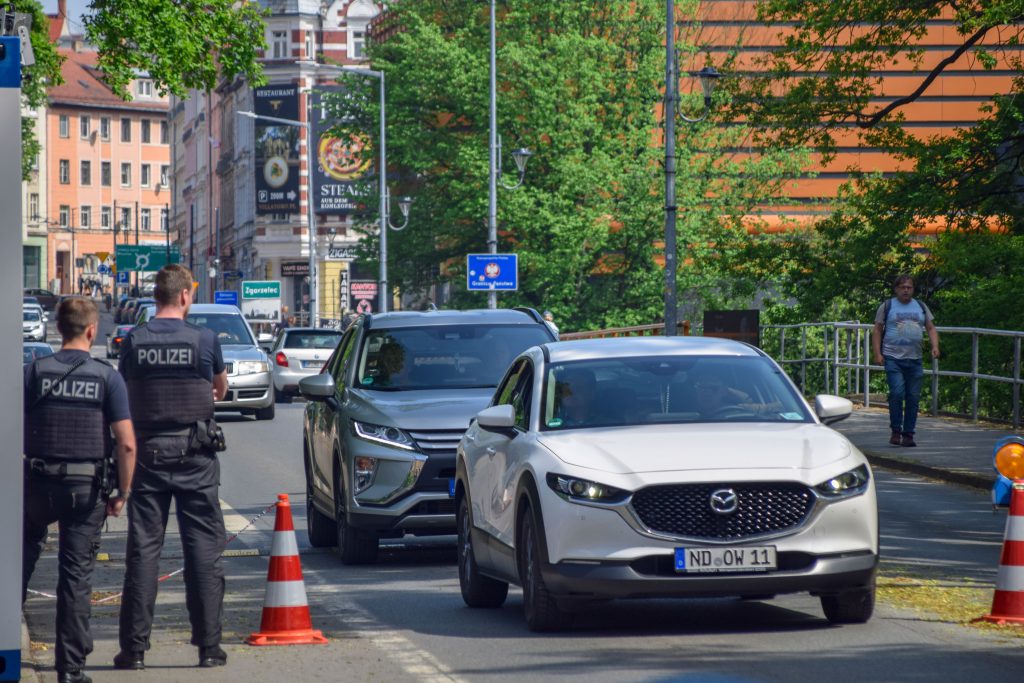Germany's Stricter Border Controls: Lowest Migration Since COVID-19

Table of Contents
The Impact of Strengthened Border Security Measures
Germany's approach to managing its borders has undergone a significant transformation in recent years, leading to a noticeable decline in migration. This section delves into the specific measures implemented and their effectiveness.
Increased Surveillance and Technological Advancements
The German government has invested heavily in upgrading its border security infrastructure. This includes the widespread implementation of advanced technologies aimed at enhancing surveillance and detection capabilities.
- Improved biometric data collection: Biometric data, such as fingerprints and facial recognition, are now more extensively used at border crossings to identify individuals and verify their identities, streamlining the process and flagging potential risks.
- Increased drone surveillance: Drones equipped with high-resolution cameras are increasingly utilized for border patrol, providing a wider coverage area and improving the detection of illegal crossings, particularly in remote or challenging terrains.
- Enhanced cooperation with neighboring countries: Closer collaboration with neighboring countries, such as Austria and Switzerland, through information sharing and joint patrols, has strengthened border security along shared frontiers and improved the efficiency of border controls.
- Deployment of advanced scanning technologies: New technologies such as advanced X-ray scanners and sophisticated detection systems for concealed goods and individuals are being deployed at major entry points to enhance security checks.
Stricter Asylum Procedures and Eligibility Criteria
Alongside technological improvements, Germany has also tightened its asylum procedures and eligibility criteria. This involves a more rigorous assessment of asylum claims and a more stringent approach to determining refugee status.
- Increased processing times: The processing of asylum applications has become significantly more time-consuming, creating a backlog and potentially deterring some asylum seekers.
- More stringent documentation requirements: Applicants are now required to provide more extensive documentation to support their claims, making the process more challenging for those without readily available evidence.
- Higher rejection rates for asylum claims: A noticeable increase in the rejection rate of asylum claims reflects a stricter interpretation of eligibility criteria, reducing the number of successful applications. This stricter evaluation process considers factors such as the applicant's country of origin, evidence of persecution, and the overall risk assessment of their situation.
External Factors Contributing to Reduced Migration
While Germany's internal policies have played a significant role, external factors have also contributed to the reduction in migration.
Geopolitical Instability and Regional Conflicts
The intensity of conflicts and political instability in regions traditionally associated with high migration flows towards Germany has fluctuated. This has had a direct impact on the number of individuals seeking refuge.
- Reduced conflict intensity in specific regions: Decreased conflict intensity in some regions, even temporarily, has reduced the immediate pressure on individuals to flee their homes.
- Improved stability in certain countries: Increased political stability in some countries of origin has led to improved safety conditions and decreased the likelihood of citizens seeking refuge elsewhere.
- Increased internal displacement within source countries: While migration to Germany has decreased, internal displacement within source countries has increased in certain situations, indicating a complex interplay of factors influencing migration patterns.
Economic Factors and Opportunities in Origin Countries
Improved economic conditions in certain countries of origin have also played a role.
- Economic growth in sending countries: Positive economic growth in some regions provides greater opportunities within those countries, reducing the incentive to migrate.
- Improved employment opportunities: Increased job opportunities and improved working conditions in origin countries have lessened the appeal of seeking work abroad.
- Increased investment in education and infrastructure: Investment in education and infrastructure development in source countries can improve living standards and reduce the push factors driving migration.
Analysis of Current Migration Statistics and Trends
Official statistics from the German Federal Statistical Office (Destatis) show a significant decrease in net migration to Germany compared to pre-pandemic levels. This decline is evident across various nationalities and reasons for migration.
- Statistical charts showing migration decline: Data clearly illustrates a substantial reduction in the number of asylum seekers and economic migrants entering Germany.
- Comparison with EU migration statistics: A comparative analysis with other EU countries helps contextualize Germany's migration trends within the broader European context.
- Predictions for future migration flows: Experts are increasingly studying the long-term implications of these policies and predicting future migration flows based on current trends and potential future challenges.
Conclusion
Germany's stricter border controls have undeniably contributed to the lowest migration rates since the COVID-19 pandemic. The combination of enhanced security measures, stricter asylum procedures, and external factors like regional stability and economic improvements in origin countries has significantly altered migration patterns. While the reasons behind this decrease are multifaceted, the impact of Germany's strengthened border control policies is undeniable. Further analysis and ongoing monitoring of these policies and their long-term effects are crucial. To stay informed on the latest developments regarding Germany's border controls and their impact on migration, continue to follow reputable news sources and official government reports. Understanding the complexities of Germany's border controls is essential for navigating the evolving landscape of migration in Europe.

Featured Posts
-
 Die Wichtigsten Deutschen Duelle Der Champions League Geschichte
Apr 29, 2025
Die Wichtigsten Deutschen Duelle Der Champions League Geschichte
Apr 29, 2025 -
 Kentucky Storm Damage Assessments Delays Explained
Apr 29, 2025
Kentucky Storm Damage Assessments Delays Explained
Apr 29, 2025 -
 Pw C Us Partners Ordered To Sever Brokerage Ties Following Internal Probe
Apr 29, 2025
Pw C Us Partners Ordered To Sever Brokerage Ties Following Internal Probe
Apr 29, 2025 -
 Blue Origin Cancels Launch Vehicle Subsystem Issue Halts Mission
Apr 29, 2025
Blue Origin Cancels Launch Vehicle Subsystem Issue Halts Mission
Apr 29, 2025 -
 U S Companies Slash Costs Amid Tariff Uncertainty
Apr 29, 2025
U S Companies Slash Costs Amid Tariff Uncertainty
Apr 29, 2025
